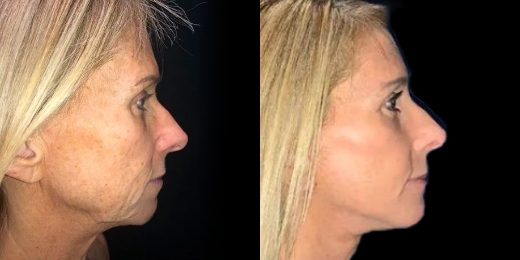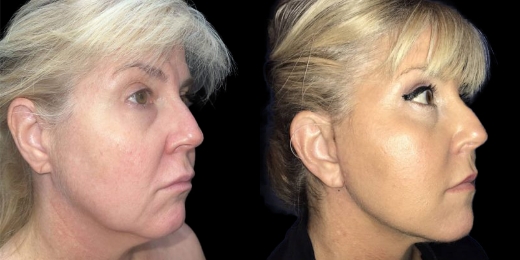As one of the most popular body contouring procedures, a tummy tuck is an effective way for patients to get rid of undesirable pockets of skin and fat. This treatment can help patients achieve confidence in their enhanced curves, and is deemed safe by the FDA and the American Society for Aesthetic Plastic Surgery (ASAPS).
However, like any plastic surgery, there are still certain risks and side effects. While many patients find that a tummy tuck’s benefits outshine potential drawbacks, all candidates should understand the procedure’s effects beforehand.
Contents
Side Effects after Surgery
After receiving tummy tuck surgery, also called abdominoplasty, you can expect a few common side effects. All of the below effects should subside in the days, weeks, or months after surgery, depending on the type of procedure you receive and your individual recovery.
- Swelling: As one of the most common effects of plastic surgery, you will experience swelling soon after the procedure. Use of an ice pack throughout the day may help decrease swelling early on, although most patients do not see a significant change until a week into recovery. Some tummy tucks will not yield their best results until months after surgery, around the same time swelling has disappeared completely.
- Bruising: With the tummy tuck’s removal of skin and fat tissue, some blood cells are likely to rupture and result in temporary bruising. Any such discoloration should begin to resolve within the first week after surgery.
- Discomfort: Tenderness around the surgical area is likely to result in discomfort in the early stages of recovery. Over-the-counter or prescription pain medication greatly ease this problem, and is not generally needed for more than a week or two after surgery.
- Fatigue: Over the first few days of recovery, you should expect to feel tired or groggy. This is especially true if general anesthesia or sedation is used during the procedure. Regardless, rest and relaxation is required for three to four days, during which you should only engage in occasional light walking to promote circulation.
Tummy Tuck Procedures
Your side effects during recovery are influenced by multiple factors, one of which is the type of abdominoplasty you receive. There are three types of tummy tucks, each for varying body types and degrees of tissue removal:
- Full tummy tuck: This is the traditional procedure, involving an incision from hip to hip. Fat and skin are removed from the stomach and front waistline, abdominal muscles are tightened, and remaining skin is stretched over the area for a tighter appearance. The side effects and their durations following a full tummy tuck are noted above, with some variance among patients.
- Mini tummy tuck: The incision for a mini tummy tuck is much smaller, resulting in limited tissue removal below the navel. Because the procedure is less invasive, bruising, swelling, and discomfort will be confined to a smaller area. Patients may also find that they are able to return to work or daily activities more easily.
- Extended tummy tuck: In this procedure, the incision is extended around the hips, leading to a larger area and degree of tissue removal. Extended tummy tucks often require that patients rest for 23 hours before returning home, at which point they can expect similar side effects to a full tummy tuck. Side effects will likely cover a larger area, although the recovery period will not necessarily last longer.
Risks of Complication
Patients who are in good overall health and carry no significant risk factors can expect a successful procedure with very little chance of complication. As with any surgery, infection is a possibility, but this can be avoided through the use of antibiotics and proper use of a post-surgical compression garment.
When speaking with your doctor before surgery, ask about the possible risk factors that may limit your candidacy. Heavy smokers, for instance, have more difficulty recovering from surgical procedures, as do patients with illnesses that limit their immune system. Uncontrolled diabetes, heart disease, liver disease, and circulatory problems are some factors that may put patients at an increased risk of complications.
Meet with Dr. Greenberg
To hear more about the risks and benefits of tummy tuck surgery, schedule a meeting with Dr. Greenberg. Through a personal consultation, you can gain a better understanding of whether you’re a good candidate for any of our plastic surgery treatments and what you can expect from them. Contact us today to learn more.


